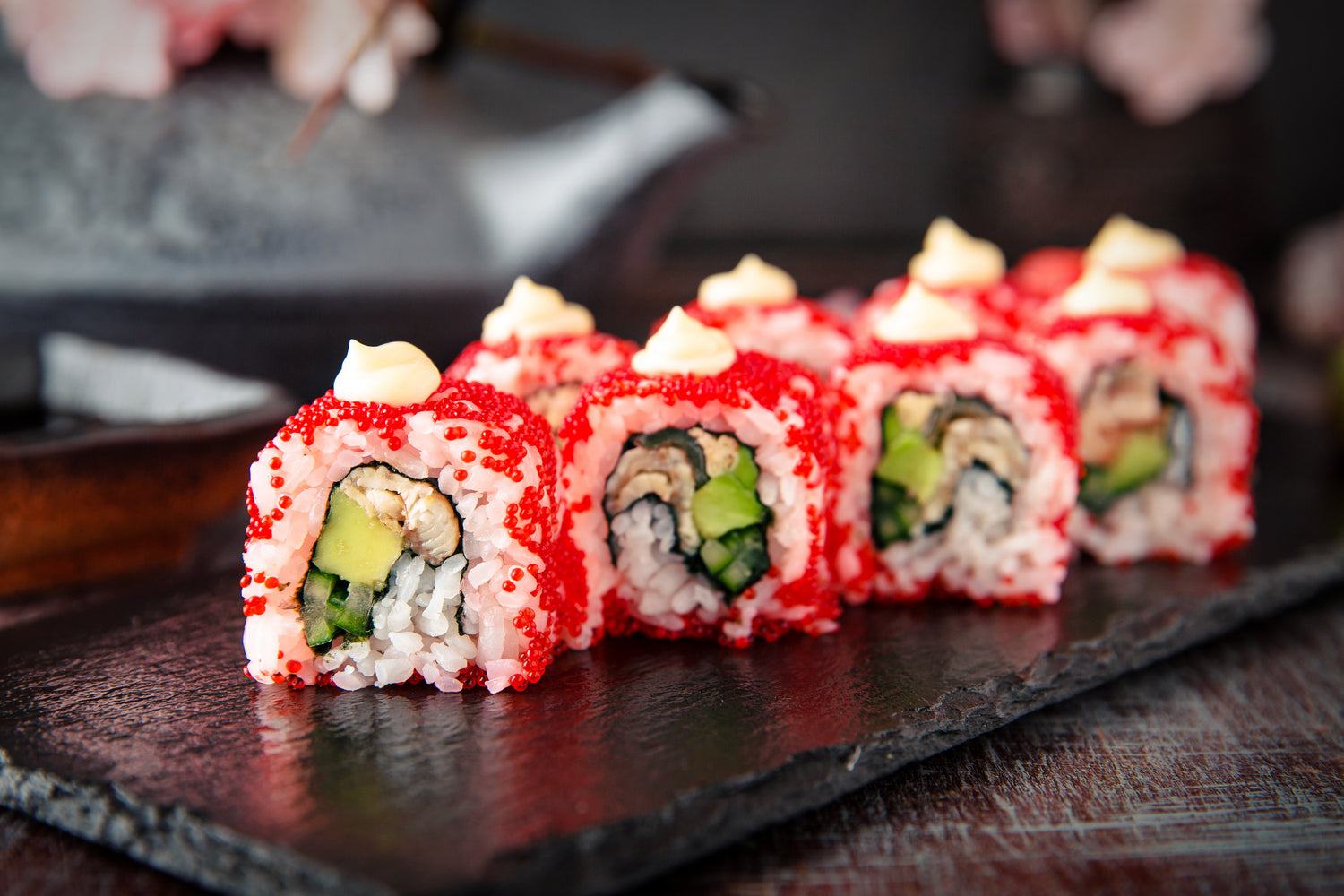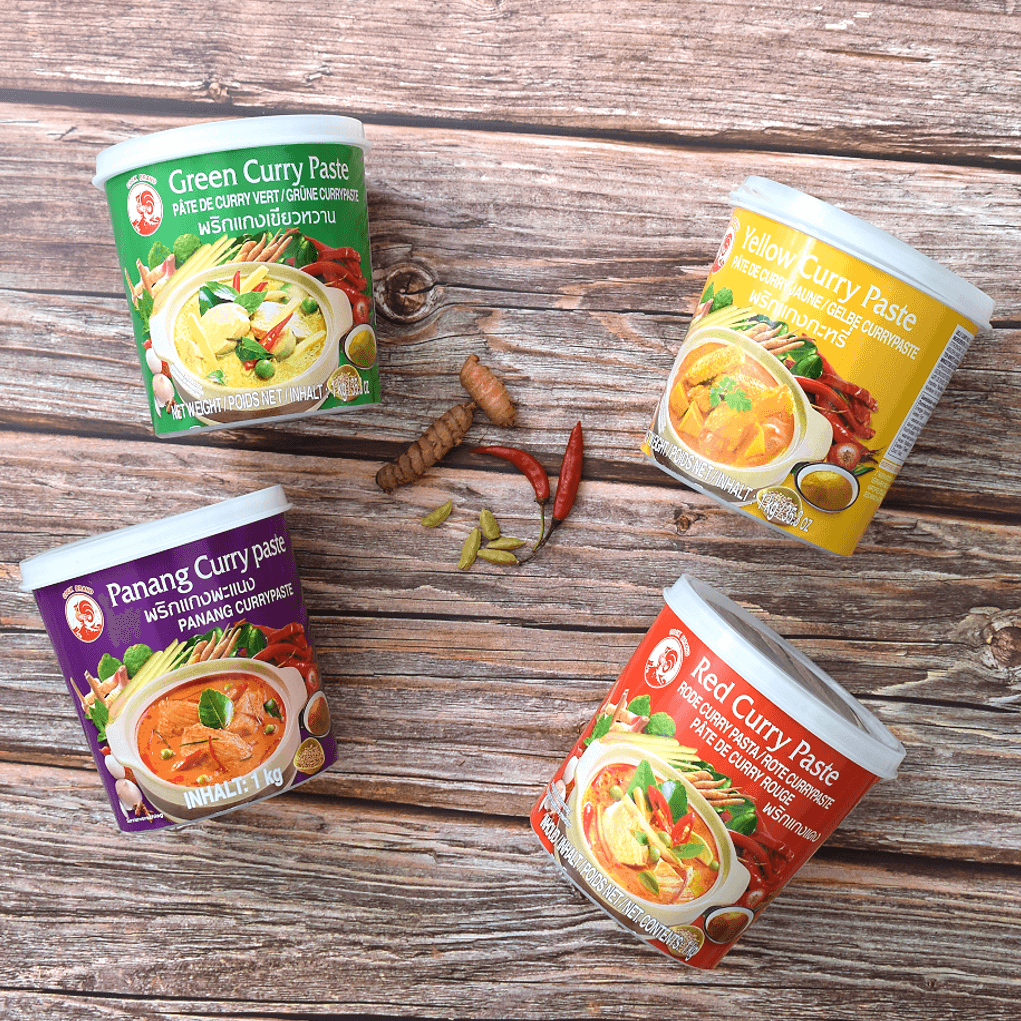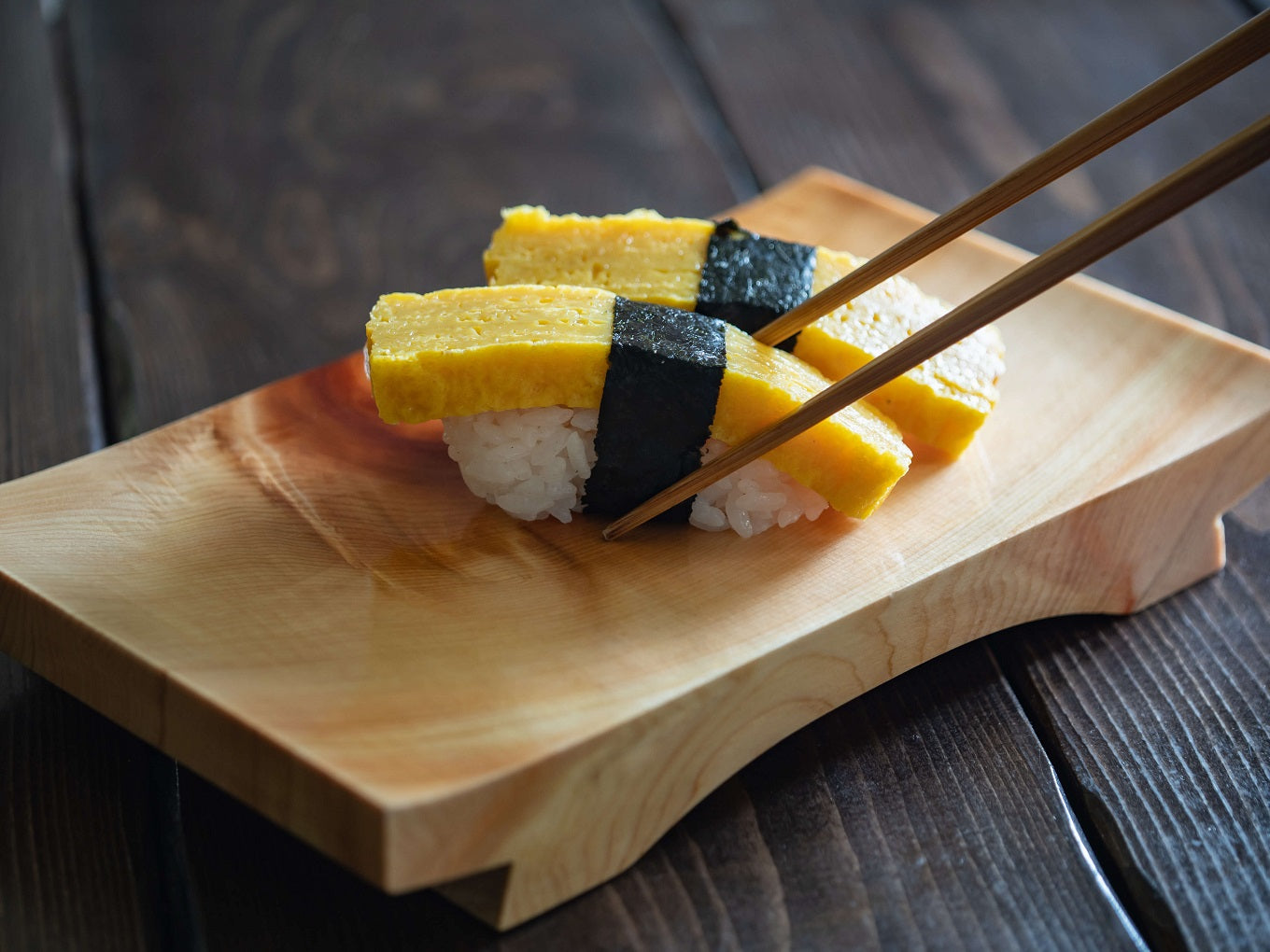
Sushi is often served with additional elements to make the taste or texture more complex. The following are often combined with sushi:
- Soy sauce: Sushi is often dipped in soy sauce for additional flavor. Depending on the chosen soy sauce, the overall taste can vary significantly. A so-called "white" soy sauce, for example, is much milder than the well-known dark soy sauces and thus allows the actual flavor of the sushi more room.
- Wasabi: This spicy paste made from the wasabi root is usually already spread on the sushi by the sushi chef. On a sushi platter, it is often served additionally and can then, for example, be mixed into the soy sauce, resulting in a spicy soy sauce.
- Pickled ginger (called Gari): Thin slices of ginger pickled in rice vinegar and sugar, which should not be eaten together with the sushi, but are meant to serve as a "palate cleanser" between sushi bites.
- Sesame seeds, classic: Light and black roasted sesame seeds are used as a topping especially for California Rolls and give them, besides the delicate nutty flavor, also a nice appearance.
-
Sesame seeds, modern: Modern varieties of sesame such as sesame coated with kimchi seasoning mix or wasabi seasoning mix make the sushi colorful and add delicious flavor notes of the respective seasoning mix
- Japanese mayo: A rich mayonnaise that can be used as a topping or dip sauce.
- Tobikko: Tobikko are roe (fish caviar) from fish. They come in various colors such as reddish, yellow, greenish. They are often used as decoration for sushi because they add a nice color. The texture is slightly crunchy.
- Pearls: The ideas for pearls filled with delicious liquid content and a crunchy texture (similar to caviar) come from molecular cuisine. When you bite into these pearls, the liquid flows out in your mouth.



